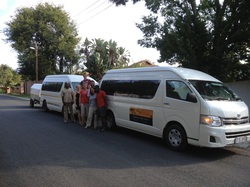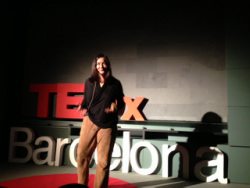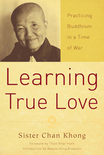On the first day of class, we learned that the person sitting next to us would be our vocabulary partner. And to our surprise, our vocabulary grade would be the lower of the pair, because "we have a responsibility to look out for the weakest among us." Her indignation at poor French grammar rivaled the heated jeers of sports enthusiasts in a tense game. "Pas DE" echoes in my memory whenever I think of her. Yet this fierceness was love-- you could see by the same decibel of JOY she shared with each of her students' successes. When you received 5 As (or 5 consecutive improved grades for those of us who were not straight A students but tried hard), you would get a choice between a homemade strawberry pie or a special chocolate orange from France. Both were highly coveted rewards, because she was TOUGH. Achievement in Mme Maker's class was REAL success.
Though feared by many- for me, she was a beloved teacher who cared about us enough to build our character, not only our vocabulary. Her urgency came from living through WWII as part of the French Resistance in Paris. She risked her life as a teenager to save the lives of others. Her fierce love was often misunderstood. As privileged children removed from war, we could not imagine what it means to experience social fabric disintegrate. She had lived through and seen unspeakable horrors yet she inspired us with tales of narrow escapes. Her name was Peter. (Her parents had wanted a boy. When they discovered she was a girl, they decided to name her Peter anyway.) One day, the Gestapo banged on her door. "Peter, we know you are in there." She was terrified- caught finally. She opened the door. The Nazi officers pushed her aside, "Where is he? Where is PETER?" They turned her apartment upside down looking for "him." Then left admonishing that they knew HE was working with the Resistance and would get him. So her parents saved her life. Her stories always showed how "good" can triumph and how the bad included the indifferent. For her, it was the aggregation of indifference that allowed the unthinkable things to happen in France. That's why she felt such urgency for us to be better humans in the smallest of our actions. Mme Maker taught with passion; she embodied the truth that "a heart once touched by love is incapable of cowardice." (Cesare) Her heroic efforts during WWII modeled courage and continue to inspire me to be vigilant on behalf of the weakest among us.
Her unorthodox methods and passion, ultimately, got her fired only a few years from retirement. It was a battle between wealthy parents on the board protecting their sensitive children versus parents protecting rigorous academics and a dedicated teacher under threat of being fired just a few years before retirement. My first encounter in the school of life that with wealth comes great power and that grown ups do things from self-interest rather than what may be better for the collective. My parents along with a few others fought the school on her behalf. They lost the battle. Fearing that I would suffer retaliation due to their antagonistic stance against faculty leaders, I transferred to a new school for 7th/8th grade leaving behind my friends of 6+ years. The irony is not lost that the teacher who taught me to pay attention to the weakest among us is the person with whom I first learned there can be a human cost of standing with the weak. Fortunately, my new school was outstanding. New friends came easily. I discovered my resilience and adaptability. Most of all, I learned how to use power and privilege to stand with people who are vulnerable. I would do it again-- and continue to whenever I see an opportunity.
What the world needs today is courage, may love flow from your every step. A shout out for all the teachers whose love shapes us!








 RSS Feed
RSS Feed